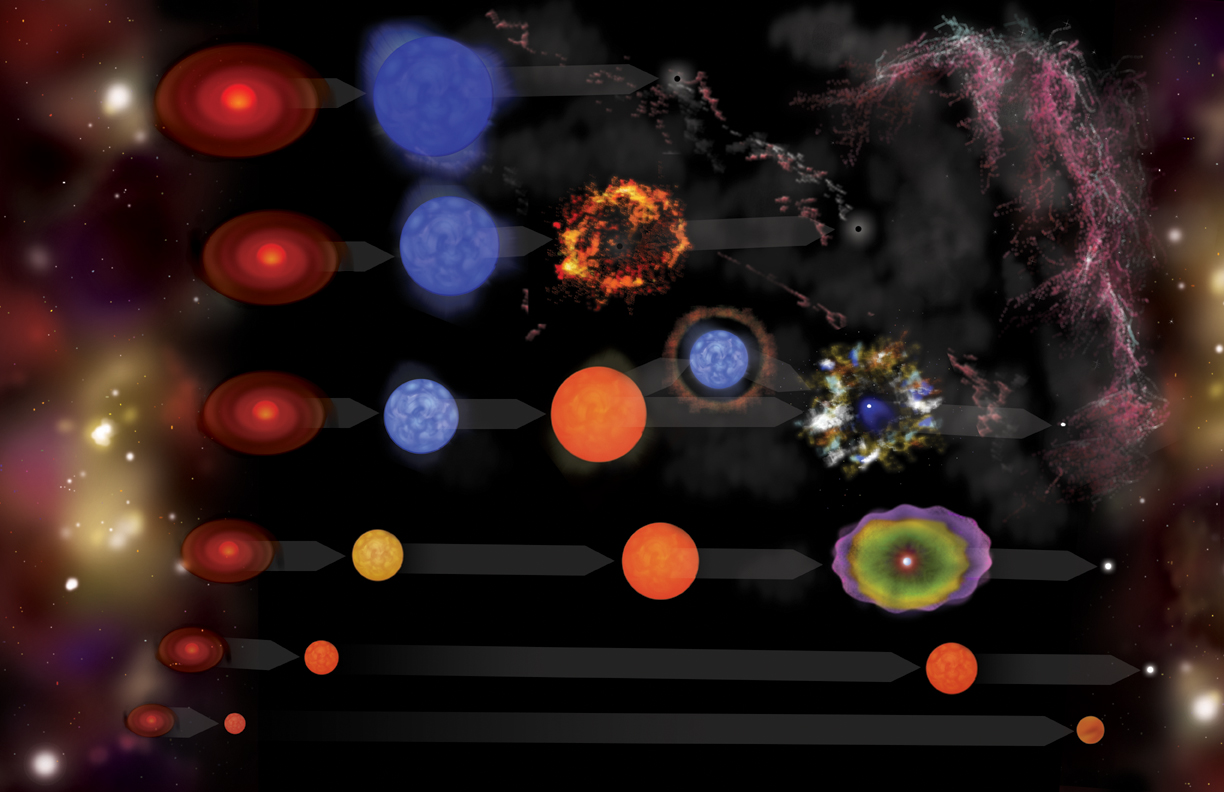The Milky Way galaxy contains several hundred billion stars of various ages, sizes and masses. A star forms when a dense cloud of gas collapses until nuclear reactions begin deep in the interior of the cloud and provide enough energy to halt the collapse.
Many factors influence the rate of evolution, the evolutionary path and the nature of the final remnant. By far the most important of these is the initial mass of the star. This interactive piece illustrates in a general way how stars of different masses evolve and whether the final remnant will be a white dwarf, neutron star, or black hole.
Stellar evolution gets even more complicated when the star has a nearby companion. For example, excessive mass transfer from a companion star to a white dwarf may cause the white dwarf to explode as a Type la supernova.
The following tableau provides a few examples of stars at various evolutionary stages, and what Chandra has learned about them. X-ray data reveal extreme or violent conditions where gas has been heated to very high temperatures or particles have been accelerated to extremely high energies. These conditions can exist near collapsed objects such as white dwarfs, neutron stars, and black holes; in giant bubbles of hot gas produced by supernovas; in stellar wind or in the hot, rarified outer layers, or coronas, of normal stars.
